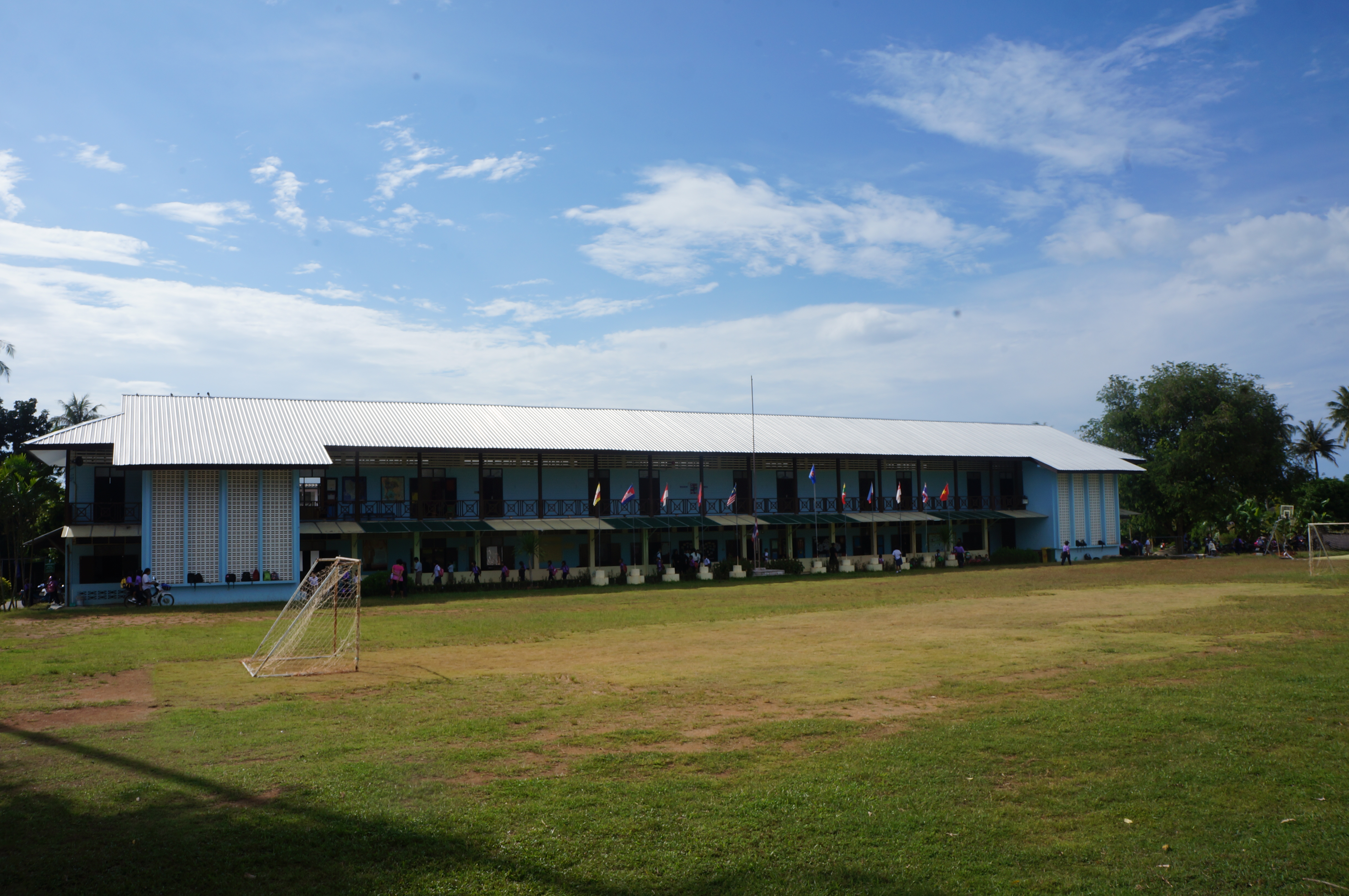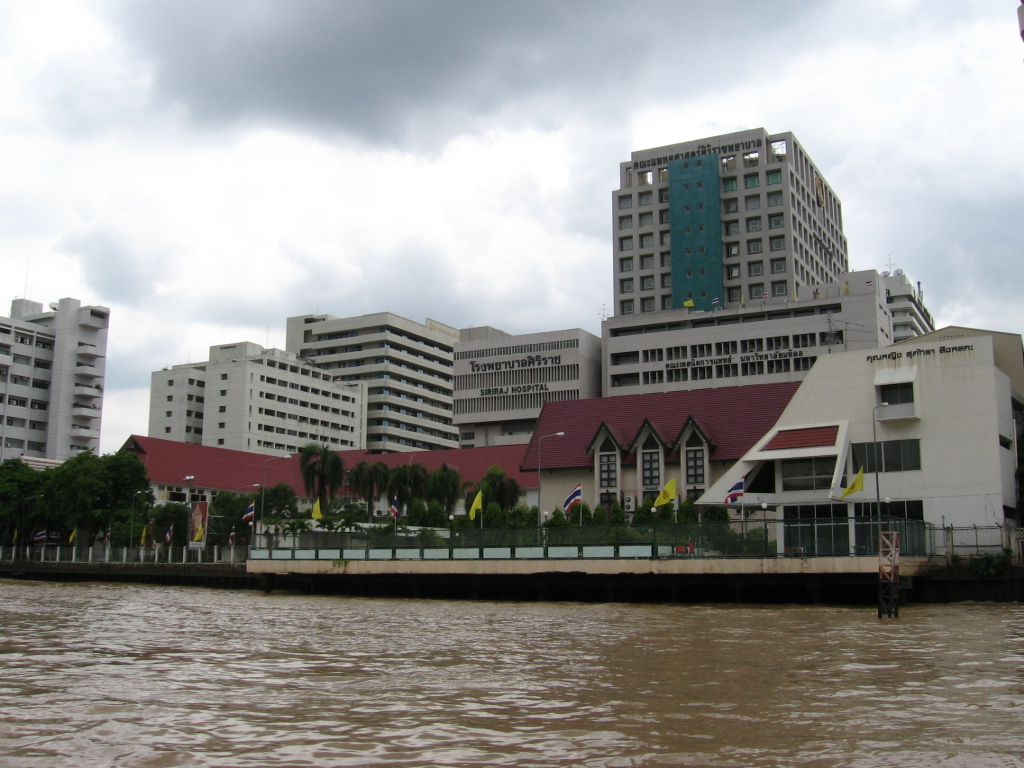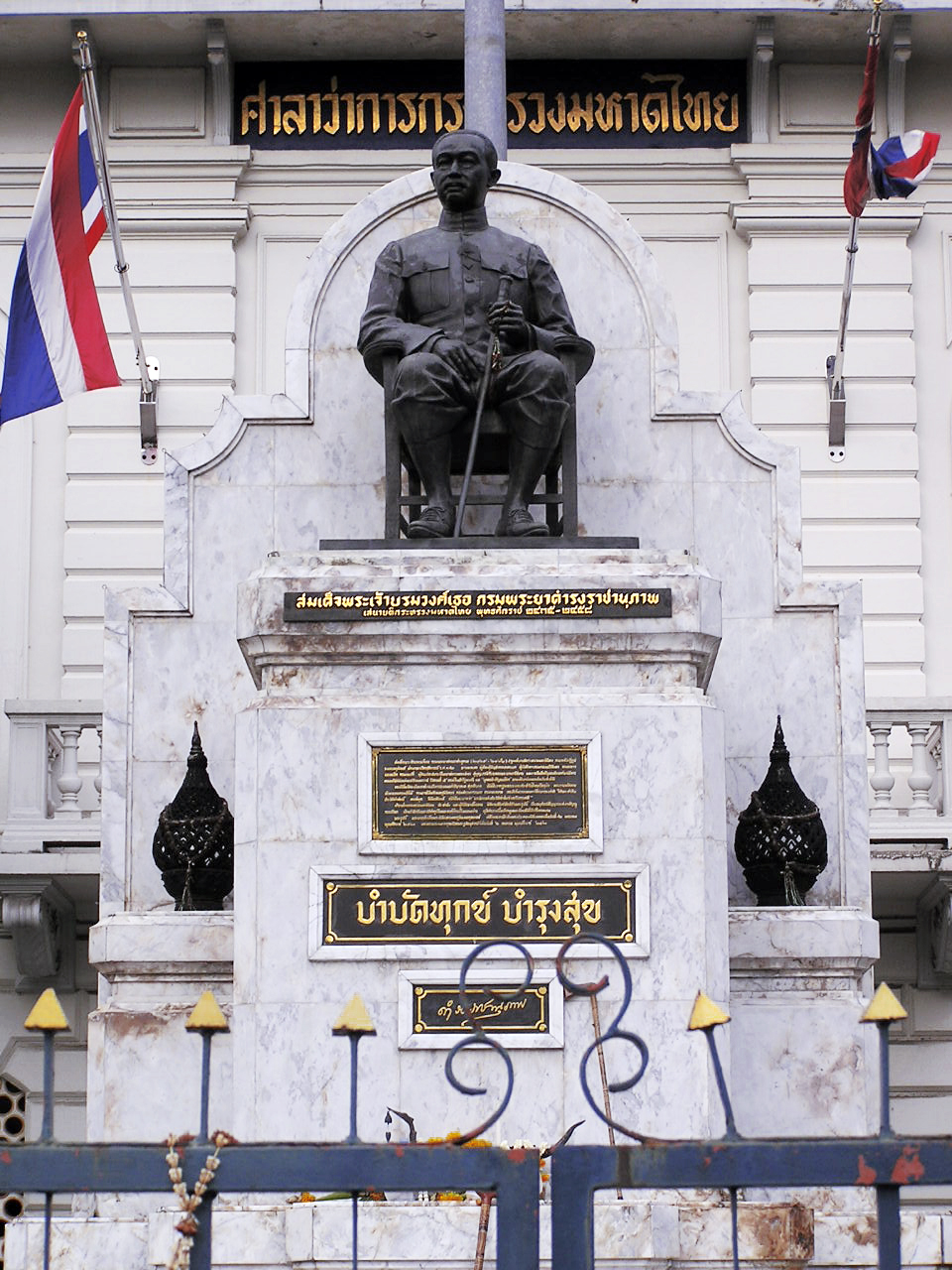|
Chulalongkorn University
Chulalongkorn University (CU; ; , ) is a public university, public Autonomous university, autonomous research university in Bangkok, Thailand. The university was originally founded during King Chulalongkorn's reign as a school for training royal pages and civil servants in 1899 (B.E. 2442) at the Grand Palace. It was later established as a national university in 1917, making it the oldest institute of higher education in Thailand. During the reign of Chulalongkorn's son, King Vajiravudh, the Royal Pages School became the Civil Service College of King Chulalongkorn. The Rockefeller Foundation was instrumental in helping the college form its academic foundation. On 26 March 1917, King Vajiravudh renamed the college "Chulalongkorn University". Chulalongkorn University is one of the National Research Universities and supported by the Office of Nation Education Standards and Quality Assessment of Thailand. Moreover, CU is the only Thai university which is a member of Association o ... [...More Info...] [...Related Items...] OR: [Wikipedia] [Google] [Baidu] |
Grand Palace
The Grand Palace (, Royal Institute of Thailand. (2011). ''How to read and how to write.'' (20th Edition). Bangkok: Royal Institute of Thailand. . ) is a complex of buildings at the heart of Bangkok, Thailand. The palace has been the official royal residence, residence of the Monarchy of Thailand, Kings of Siam (and later Thailand) since 1782. The king, his Court (royal), court, and his royal government were based on the grounds of the palace until 1925. King Bhumibol Adulyadej (Rama IX), resided at the Chitralada Royal Villa and his successor King Vajiralongkorn (Rama X) resides at the Amphorn Sathan Residential Hall, both in the Dusit Palace, but the Grand Palace is still used for official events. Several royal ceremonies and state functions are held within the walls of the palace every year. The palace is one of the most popular tourist attractions in Thailand, with over eight million people visiting each year. Construction of the palace began on 6 May 1782, at the order o ... [...More Info...] [...Related Items...] OR: [Wikipedia] [Google] [Baidu] |
Mattayom
Education in Thailand is provided mainly by the Thai government through the Ministry of Education from pre-school to senior high school. A free basic education to fifteen years is guaranteed by the Thai constitution. This basic education comprises six years of elementary school and three years of lower secondary school. In addition, three years of pre-school and three years of upper-secondary education is available free of charge, but are non-compulsory. Children aged 6–12 will go to elementary school (''prathom'' (Thai: ประถม)). From the age of 12, they attend secondary school (''matthayom'' ()). While secondary school also lasts six years, only the first three years are mandatory. After grade 9 (Matthayom 3), pupils can pursue upper-secondary education in a university-preparatory track, or continue their studies in vocational school programs. Homeschooling is legal in Thailand. Thailand's constitution and education law explicitly recognize alternative education an ... [...More Info...] [...Related Items...] OR: [Wikipedia] [Google] [Baidu] |
Faculty Of Medicine Siriraj Hospital, Mahidol University
Faculty of Medicine Siriraj Hospital, Mahidol University () is the oldest and largest medical school and the oldest of any kind of university faculty in Thailand. The faculty is now part of Mahidol University. Founded in 1889, the faculty was run in co-operation with Siriraj Hospital, the first public hospital in Thailand, which provides students with clinical experience. The faculty's campus and hospital is in the Bangkok Noi District, Bangkok, on the former Rear Palace. The medical school accepts about 250 students for undergraduate education and more than 100 to postgraduate studies each year. History Siriraj Hospital, the first public hospital in Siam, was founded in 1888 under commissions and subsidy of King Chulalongkorn, named after the deceased Prince Siriraj Kakudhabhand. However, the modern medical practitioners were still lacking as they refused to come under government's employments. The medical school was established in May 1889 known as Bhatayakorn School ( i. ... [...More Info...] [...Related Items...] OR: [Wikipedia] [Google] [Baidu] |
Faculty Of Education, Chulalongkorn University
Chulalongkorn University in Thailand comprises nineteen constituent faculty (division), faculties, as well as six schools and colleges, which form the university's teaching units. Together, they offer 76 undergraduate and 375 postgraduate programmes, and (as of the 2018 academic year) host the university's 25,940 undergraduate and 11,424 postgraduate students. Each of the faculties is focused on a specific subject area. All undergraduate and most postgraduate students will apply for a programme of study under a specific faculty, and will belong with that faculty throughout the duration of their studies. The university was established in 1917 with four original faculties: Medicine, Public Administration, Engineering, and Arts and Science. Of the four, only the faculties of Engineering and of Arts and Science remain with the university, while many others have been created or added. The university now has faculties dedicated to all major fields of study. History When the Civil Service ... [...More Info...] [...Related Items...] OR: [Wikipedia] [Google] [Baidu] |
Pathumwan District
Pathum Wan (, ) is one of the fifty districts (''khet'') of Bangkok, Thailand. It lies just beyond the old city boundary of Khlong Phadung Krung Kasem and was a rural area on the eastern outskirts of the city when royal villas were built there in the late nineteenth century. The district was officially established in 1915, and covers an area of . A large part of the district area is taken up by the campus of Chulalongkorn University and the green expanses of Lumphini Park and the Royal Bangkok Sports Club. By the turn of the 20th–21st centuries, the district had become known as the modern-day city centre, home to the prominent shopping areas of Siam and Ratchaprasong. History When King Rama I established Bangkok as his capital in 1782, he had canals dug including Khlong Maha Nak, which extended eastward from the fortified city proper of Rattanakosin Island. Communities formed along its bank, including Ban Khrua, a Muslim community mainly of Cham settlers, which stood at ... [...More Info...] [...Related Items...] OR: [Wikipedia] [Google] [Baidu] |
Windsor Palace (Thailand)
Windsor Palace was situated in Bangkok, Thailand, during the early twentieth century. Built on the orders of King Chulalongkorn (Rama V) to serve as the residence of Crown Prince Vajirunhis, the palace later became part of Chulalongkorn University but was later demolished to make way for the construction of Suphachalasai Stadium. The palace became known as such to foreign residents of Bangkok due to its partial resemblance to Windsor Castle, though it was also known to locals as Wang Klang Thung or Wang Mai. History Windsor Palace was commissioned by King Chulalongkorn in 1881 to serve as the residence of his eldest son, Prince Vajirunhis, who would later be named the first Crown Prince of Siam (Thailand). The palace was located on Sa Pathum Road (now Rama I Road) at the current location of Suphachalasai Stadium. Designed in Gothic Revival architecture, Gothic Revival style by the Italian architect Joachim Grassi, its appearance reflects that of Windsor Castle in England, and the ... [...More Info...] [...Related Items...] OR: [Wikipedia] [Google] [Baidu] |
Ministry Of Interior (Thailand)
The Ministry of Interior of the Kingdom of Thailand (Abbreviation, Abrv: MOI; , ) is a Cabinet of Thailand, cabinet-level department in the Government of Thailand. The ministry has wide ranging responsibilities. It is responsible for local administration, internal security, citizenship, disaster management, road safety, land management, issuance of national identity cards, and public works. The ministry is responsible for appointing the 76 governors of the Provinces of Thailand. The Minister of Interior ( is the head of the ministry. He is appointed by the King of Thailand on the recommendation of the Prime Minister of Thailand, prime minister. Since 1 September 2023, the head of the ministry has been Anutin Charnvirakul. He is aided by two deputy ministers. The Fiscal year, FY2019 budget of the ministry is 371,802 million Thai baht, baht. History The ministry in its present form was founded on 1 April 1892 by King Chulalongkorn (Rama V) in his reforms of the Siamese government. ... [...More Info...] [...Related Items...] OR: [Wikipedia] [Google] [Baidu] |
King Chulalongkorn As Field Marshal
King is a royal title given to a male monarch. A king is an absolute monarch if he holds unrestricted governmental power or exercises full sovereignty over a nation. Conversely, he is a constitutional monarch if his power is restrained by fixed laws. Kings are hereditary monarchs when they inherit power by birthright and elective monarchs when chosen to ascend the throne. *In the context of prehistory, antiquity and contemporary indigenous peoples, the title may refer to tribal kingship. Germanic kingship is cognate with Indo-European traditions of tribal rulership (cf. Indic ''rājan'', Gothic ''reiks'', and Old Irish '' rí'', etc.). *In the context of classical antiquity, king may translate in Latin as '' rex'' and in Greek as ''archon'' or ''basileus''. *In classical European feudalism, the title of ''king'' as the ruler of a ''kingdom'' is understood to be the highest rank in the feudal order, potentially subject, at least nominally, only to an emperor (harking back t ... [...More Info...] [...Related Items...] OR: [Wikipedia] [Google] [Baidu] |
King Prajadhipok
Prajadhipok (8 November 1893 – 30 May 1941) was the seventh king of Siam from the Chakri dynasty, titled Rama VII. His reign was a turbulent time for Siam due to political and social changes during the 1932 Siamese revolution. He is to date the only Siamese monarch of the Chakri dynasty to abdicate. Early life Somdet Chaofa Prajadhipok Sakdidej () was born on 8 November 1893 in Bangkok, Siam (now Thailand) to King Chulalongkorn and Queen Saovabha Phongsri. Prince Prajadhipok was the youngest of nine children born to the couple. Overall he was the king's second-youngest child (of a total of 77), and the 33rd and youngest of Chulalongkorn's sons. Unlikely to succeed to the throne, Prince Prajadhipok chose to pursue a military career. Like many of the king's children, he was sent abroad to study, going to Eton College in 1906, then to the Woolwich Military Academy from which he graduated in 1913. He received a commission in the Royal Horse Artillery in the British ... [...More Info...] [...Related Items...] OR: [Wikipedia] [Google] [Baidu] |







